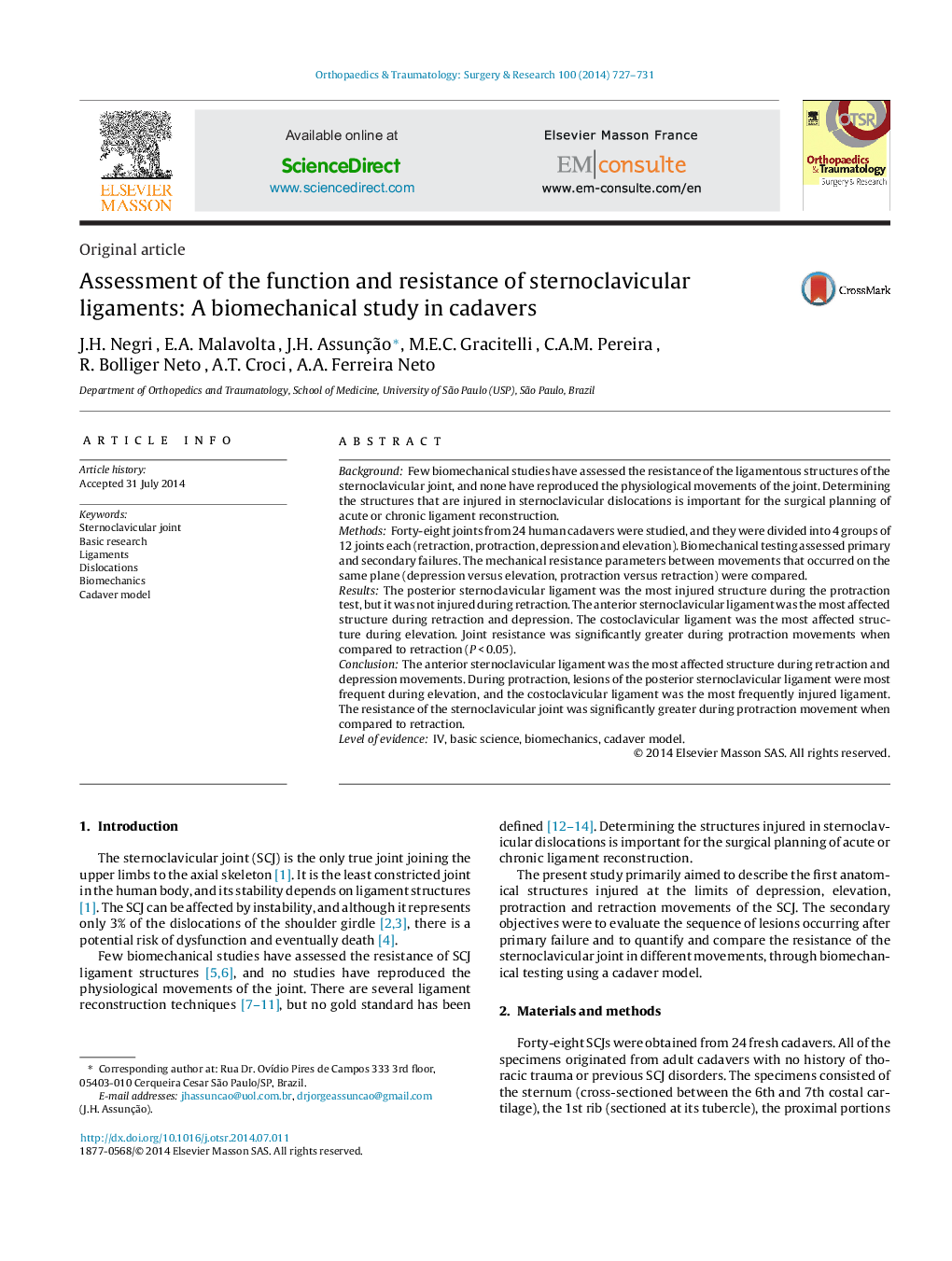| Article ID | Journal | Published Year | Pages | File Type |
|---|---|---|---|---|
| 4081403 | Orthopaedics & Traumatology: Surgery & Research | 2014 | 5 Pages |
BackgroundFew biomechanical studies have assessed the resistance of the ligamentous structures of the sternoclavicular joint, and none have reproduced the physiological movements of the joint. Determining the structures that are injured in sternoclavicular dislocations is important for the surgical planning of acute or chronic ligament reconstruction.MethodsForty-eight joints from 24 human cadavers were studied, and they were divided into 4 groups of 12 joints each (retraction, protraction, depression and elevation). Biomechanical testing assessed primary and secondary failures. The mechanical resistance parameters between movements that occurred on the same plane (depression versus elevation, protraction versus retraction) were compared.ResultsThe posterior sternoclavicular ligament was the most injured structure during the protraction test, but it was not injured during retraction. The anterior sternoclavicular ligament was the most affected structure during retraction and depression. The costoclavicular ligament was the most affected structure during elevation. Joint resistance was significantly greater during protraction movements when compared to retraction (P < 0.05).ConclusionThe anterior sternoclavicular ligament was the most affected structure during retraction and depression movements. During protraction, lesions of the posterior sternoclavicular ligament were most frequent during elevation, and the costoclavicular ligament was the most frequently injured ligament. The resistance of the sternoclavicular joint was significantly greater during protraction movement when compared to retraction.Level of evidenceIV, basic science, biomechanics, cadaver model.
